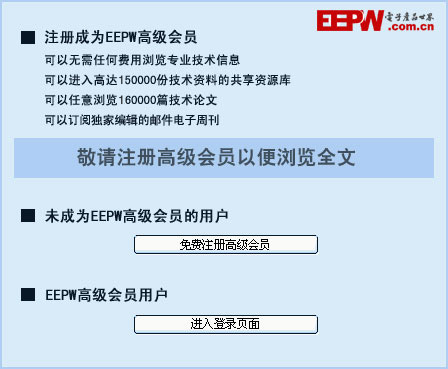DVB-SHalf-NIMTunerReferenceDesignUsestheMAX2120Tuner
Abstract: This reference design is a commercial Half-NIM DVB-S tuner that uses Maxim's MAX2120 satellite tuner IC. The reference design connects to the motherboard through a 12-pin connector. The downconverted satellite signal from the LNB is supplied to an active, discrete loop-through, which splits the signal into two paths. src="/data/attachment/portal/201007/ET30563201007220936201.jpg">
Figure 1. DVB-S Half-NIM reference design features the MAX2120 tuner.
Important Design Features
- A Popular Form Factor Often Used in the Chinese DVB-S Market; Can Be Adopted Without Physical Modifications
- Active Loop-Through Using a Discrete LNA
- LNB 12V Power Feed-Through

Figure 2. System block diagram.
Lab Measurements
Supply Current ParameterConditionsMeasuredUnitsSupply CurrentLNA supply 3.3V, Ta = +25°C26mALNA + MAX2120 3.3V, Ta = +25°C115mA
Main Signal Path Performance
Test conditions include VCC =+3.3V; RF input signals as specified in the following table; default register settings; and Ta = +25°C.
ParameterTest ConditionsFrequencyMeasuredTargetUnitsRF Input Frequency950 to 2150——MHzInput Return Loss (75Ω system)Measure at input port— -6 -6dBOverall Voltage GainUnbalanced source impedance = 75Ω, GC1 = 0.5V and GC2 = +15dB1050MHz91> 80dB1550MHz882150MHz83Noise FigureGC2 = +10dB, GC1 = 0.5V1050MHz5.5 7dB1650MHz5.542150MHz7.45I/Q Amplitude ErrorMeasured at 2MHz; filter bandwidth set to 22MHz—0.25 ±1dBI/Q Quadrature Phase ErrorMeasured at 2MHz; filter bandwidth set to 22MHz— 2.5 3.5DegIIP3 (In Band)GC1 set to provide the nominal baseband output drive when mixing down a -23dBm tone at 2055MHz to 5MHz baseband (fLO = 2050MHz). GC2 set for 7dB gain. Two tones at -26dBm each are applied at 2056MHz and 2060MHz. The IM3 tone at 2MHz is measured at baseband.—-1.5-2dBmIIP3 (Out of Band)GC1 set to provide the nominal baseband output drive when mixing down a -23dBm tone at 2055MHz to 5MHz baseband (fLO = 2050MHz). GC2 set for 7dB gain. Two tones at -20dBm each are applied at fLO -100MHz and fLO -195MHz. The IM3 tone at 5MHz is measured at baseband.—105dBmIIP2 (Broadband)GC1 set to provide the nominal baseband output drive when mixing down a -23dBm tone at 2175MHz to 5MHz baseband (fLO = 2170MHz). GC2 set for 7dB gain. Two tones at -20dBm each are applied at 925MHz and 1250MHz. The IM2 tone at 5MHz is measured at baseband.—12.514dBmPhase Noise1kHz offset, fLO =1000MHz—-73.3-70dBc/Hz10kHz offset, fLO = 1000MHz-85.6-82100kHz offset, fLO = 1000MHz-108.1-1021MHz offset, fLO = 1000MHz-120.8-122Local Oscillator Signal Leakage at RF Input TerminalMeasured at RF input port with 50MHz increment step from 925MHz to 2175MHz— -80 -63dBm
Loop-Through Performance
ParameterConditionsMeasuredTargetUnitsFrequency Range925MHz to 2175MHz——MHzReturn Loss at TV_OUTAntenna input terminated with 75Ω -6 -6dBPower Gain at TV_OUT—-0.4 to 2.8-1 to 3dBNoise Figure at TV_OUT— 5.5 6dBTV_OUT to ANT_IN Isolation—35.135dB
System Performance
DVB-S system measurements for the MAX2120 Half-NIM are made by connecting to a DVB-S demodulator. 
Figure 3. The DVB-S sensitivity without noise is better than -92.5dBm for 4.42Msps, and better than -84dBm for 27.5Msps across the band. 
Figure 4. When noise is added, the DVB-S sensitivity is better than -85dBm for 4.42Msps, and better than
Detailed Description
This MAX2120 reference design is a compact Half-NIM DVB-S tuner for satellite STB applications. The design covers the RF range from 925MHz to 2175MHz. The MAX2120 is a fully integrated silicon tuner, which includes a LNA, RF and IF VGAs, a mixer, and a variable-bandwidth LPF in the baseband stage. The tuner is powered by a single 3.3V supply. A small number of passive components are needed to form a complete DVB-S RF front-end solution.



评论